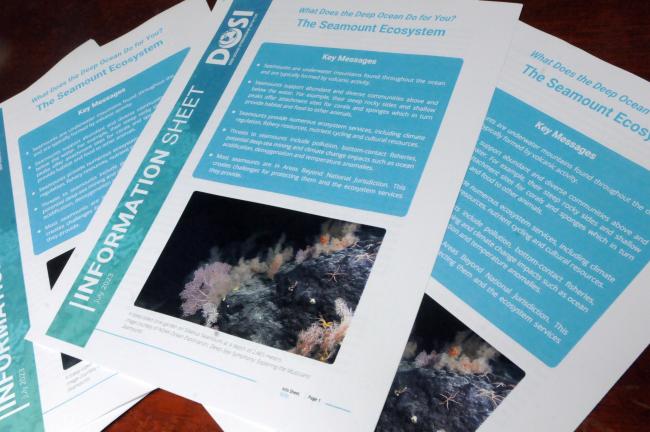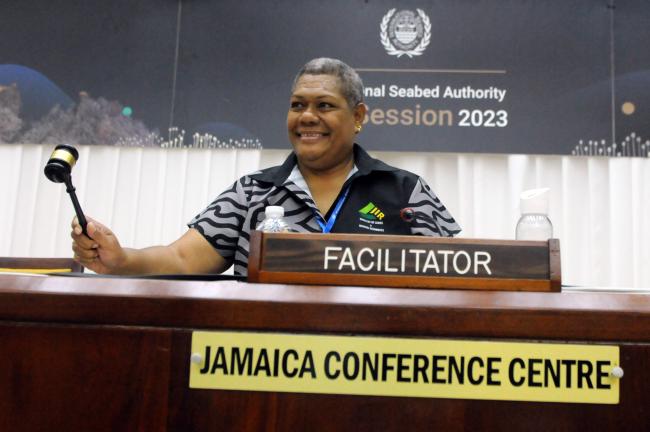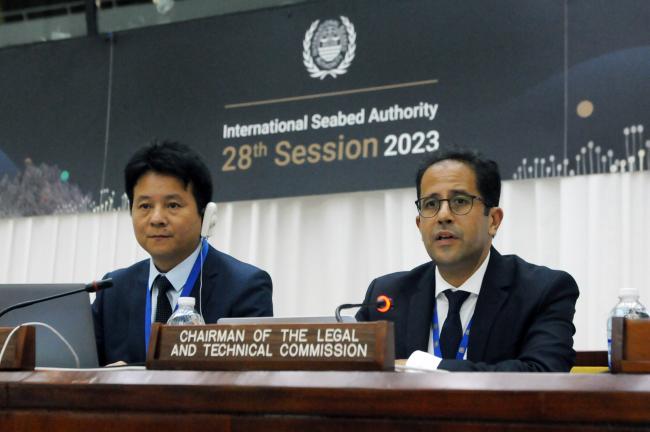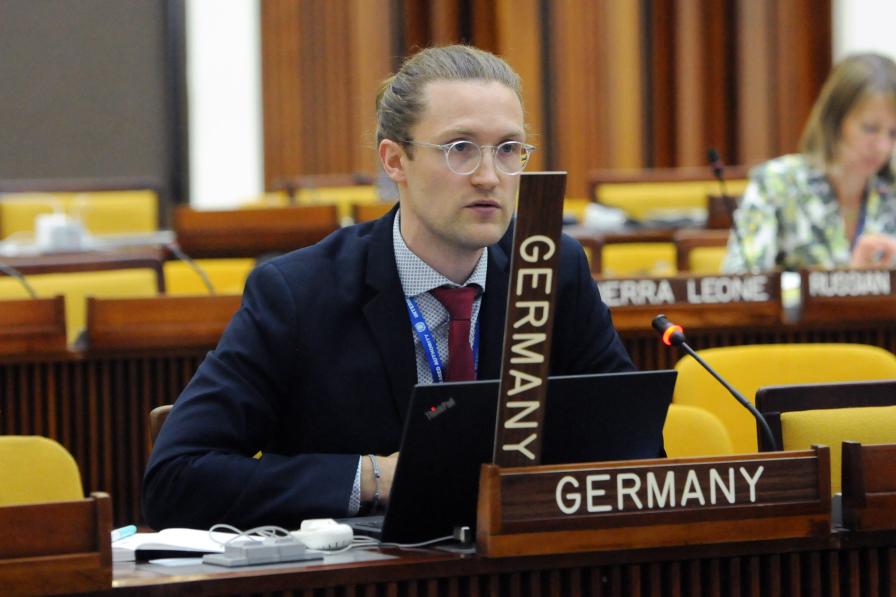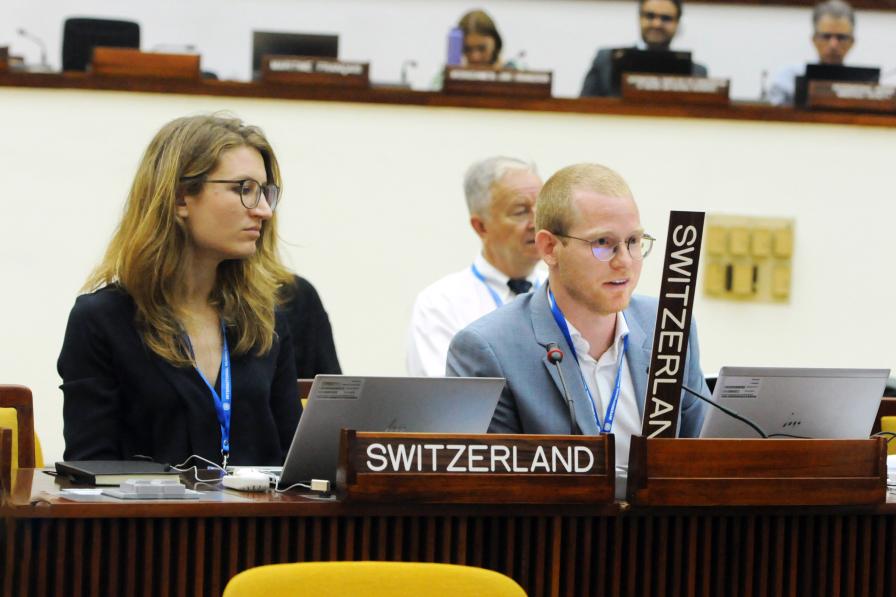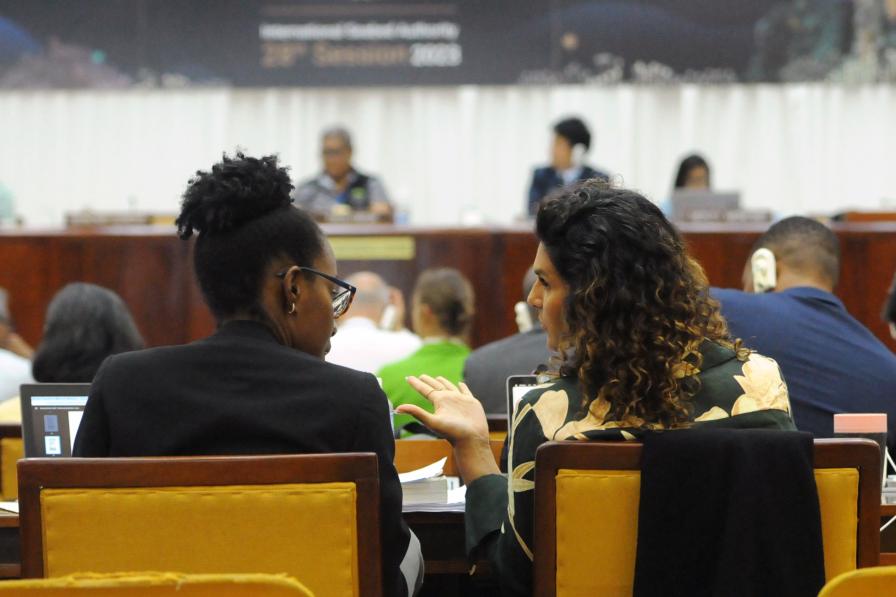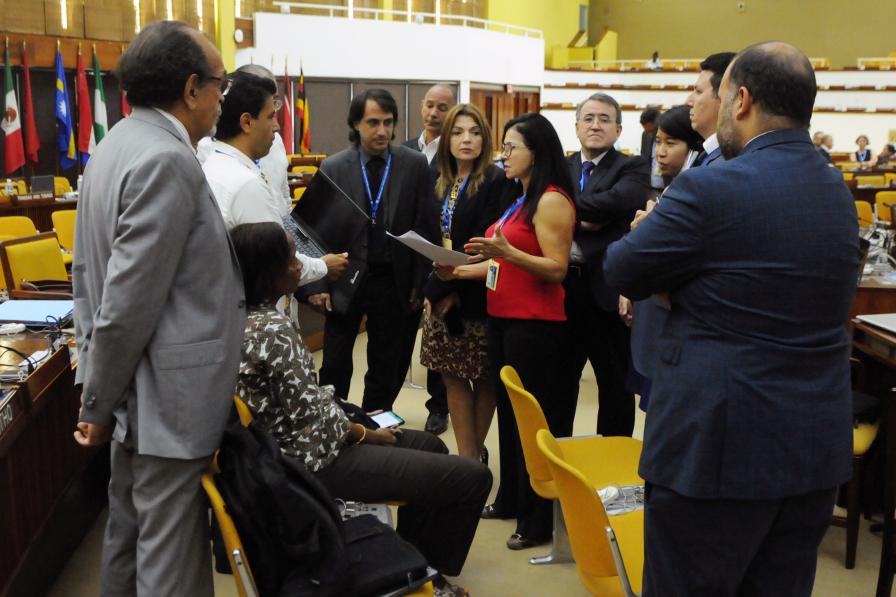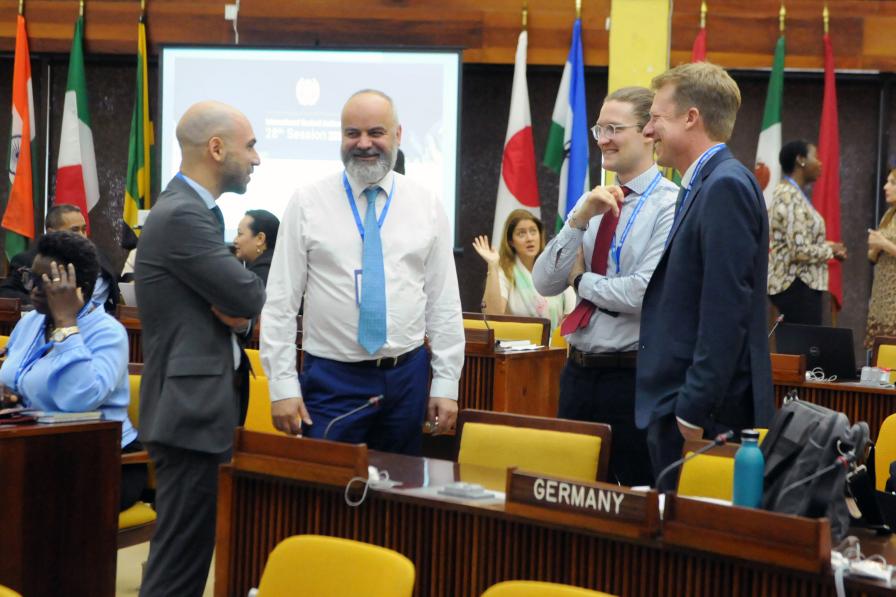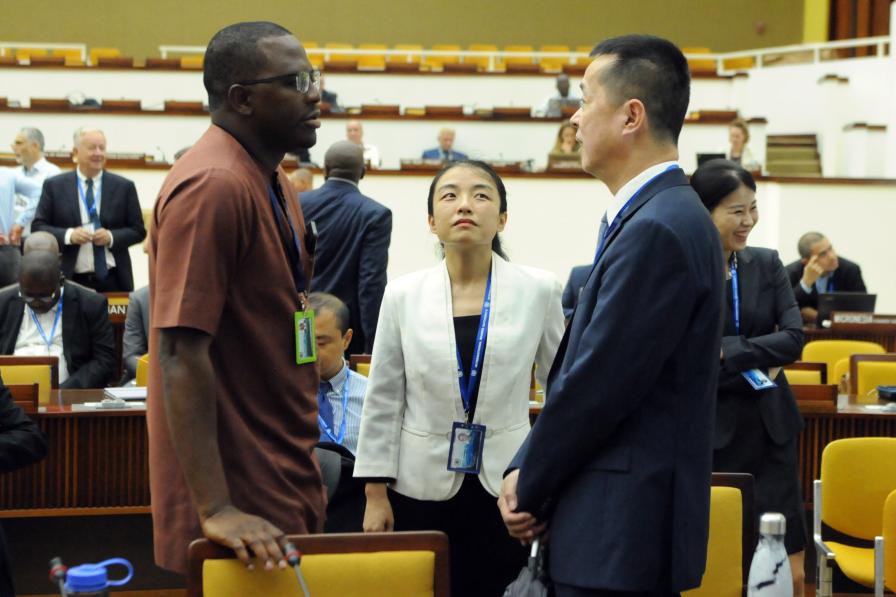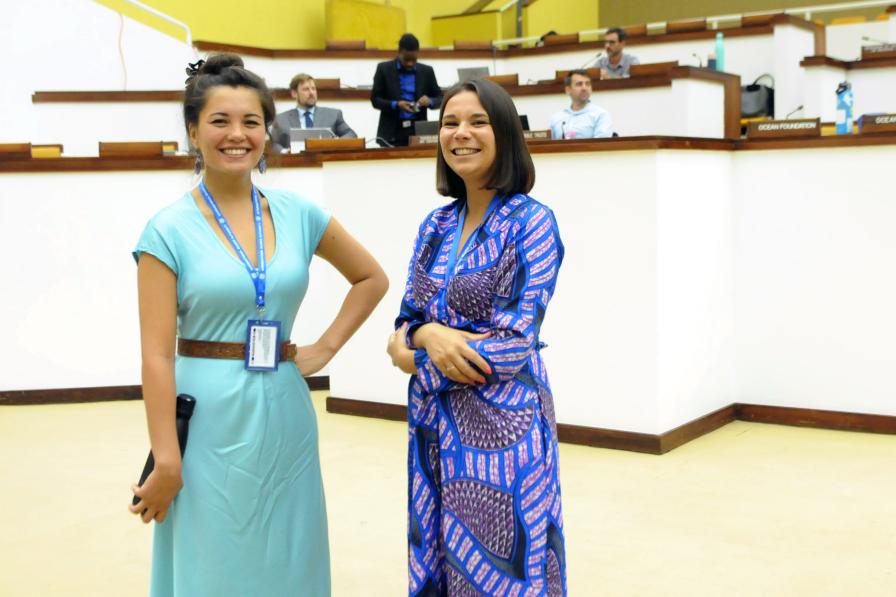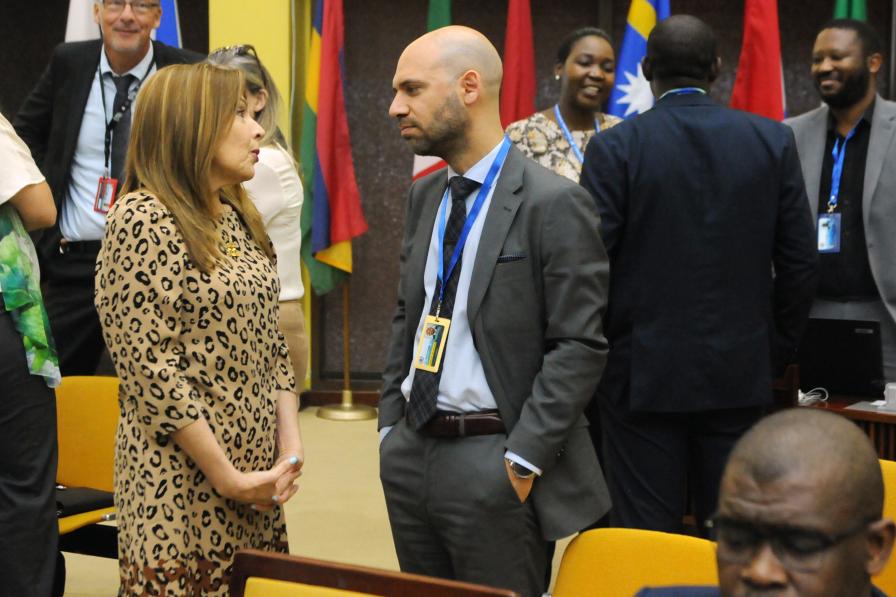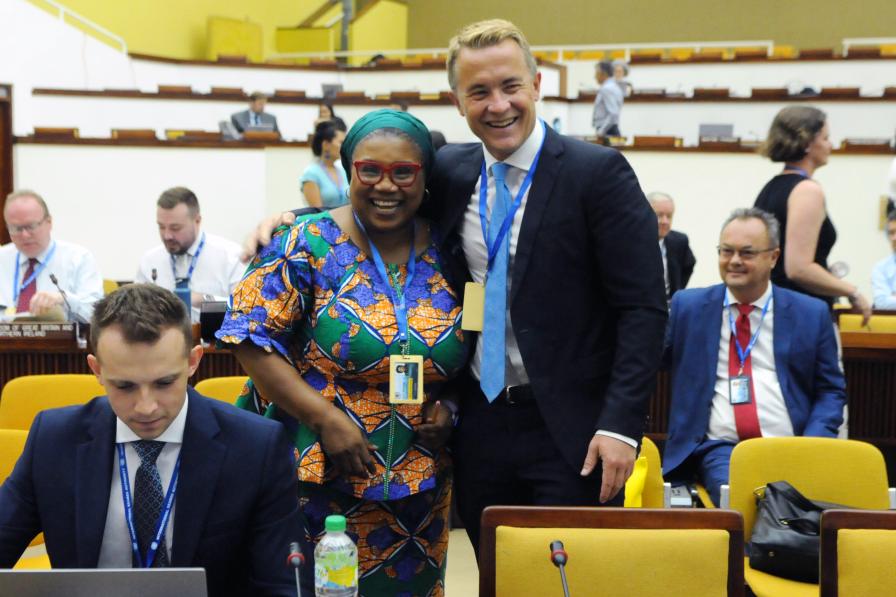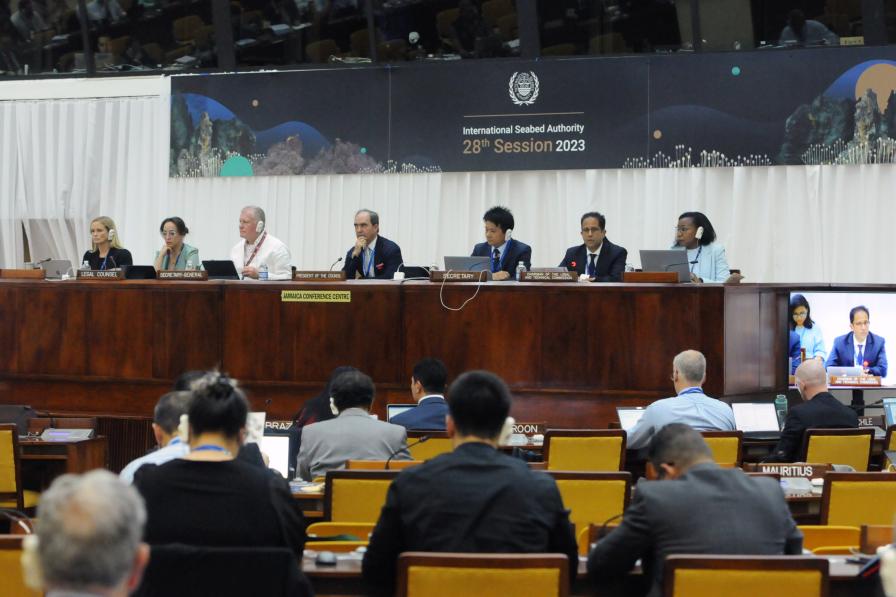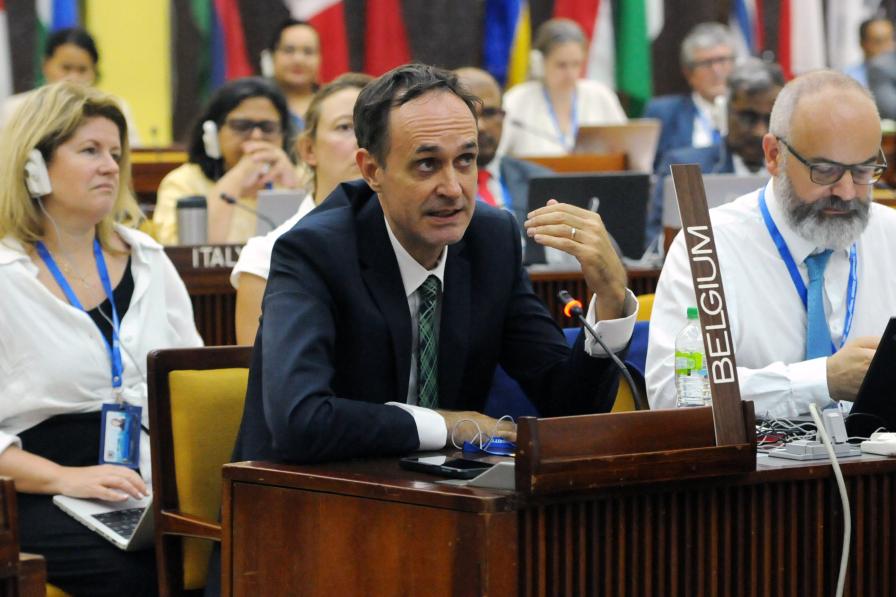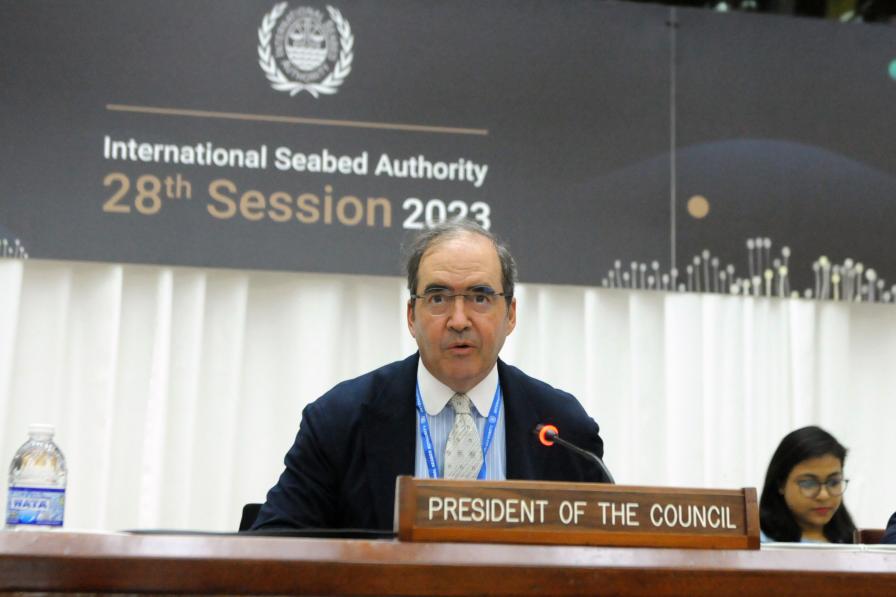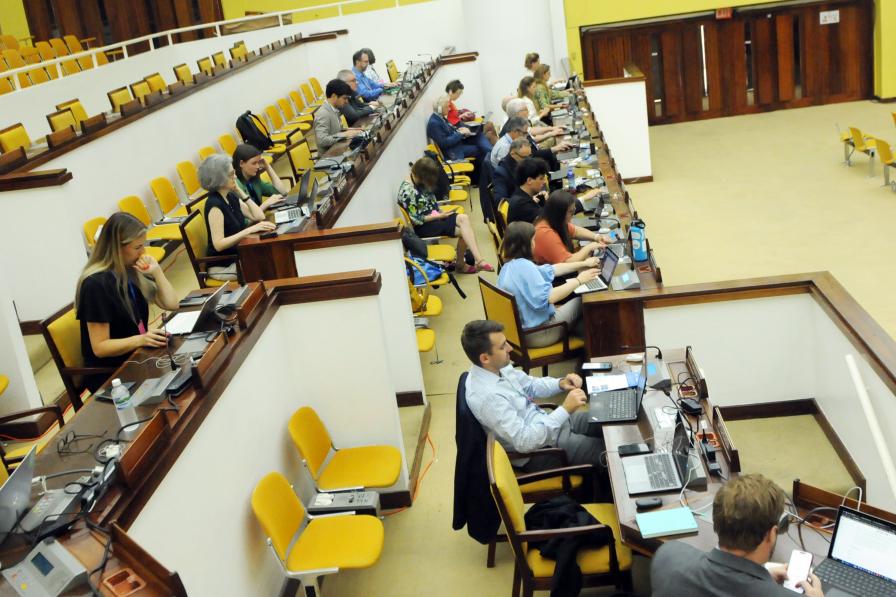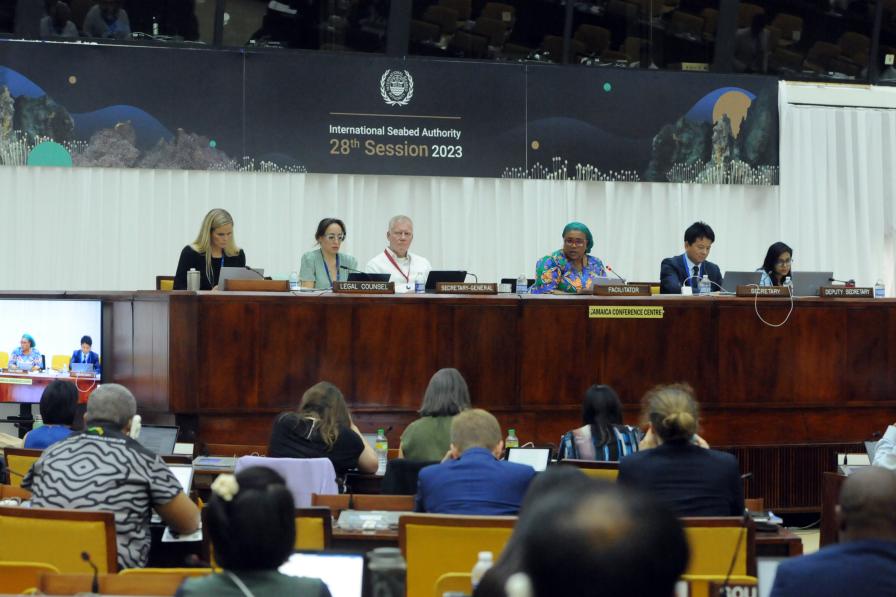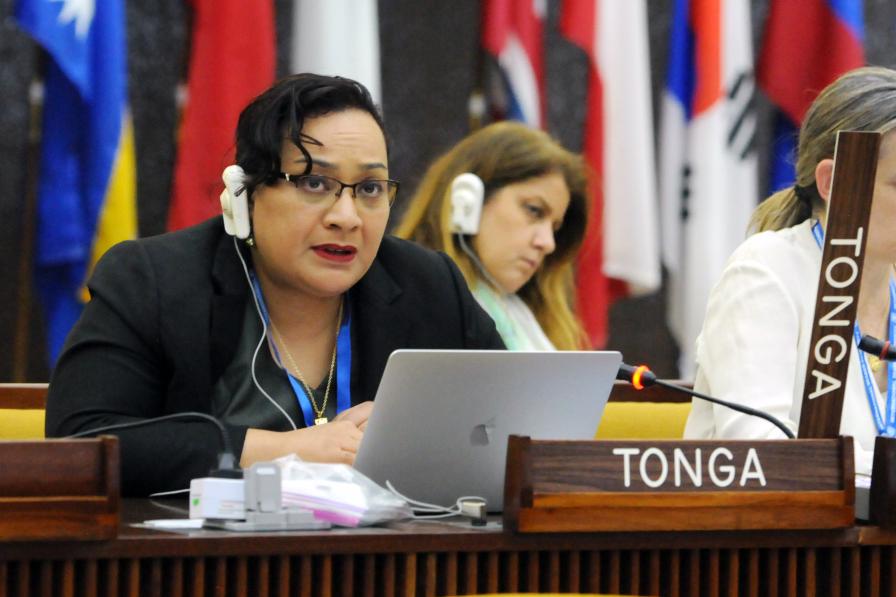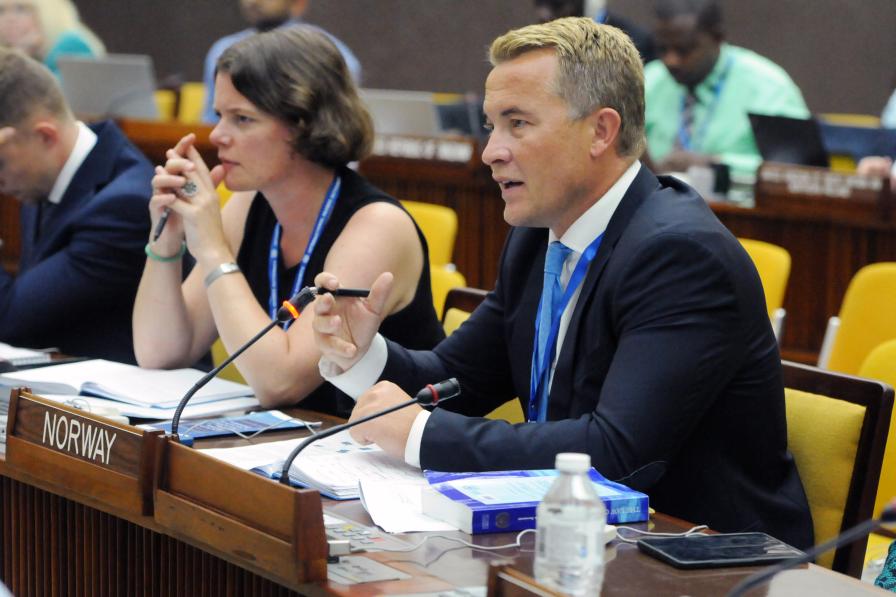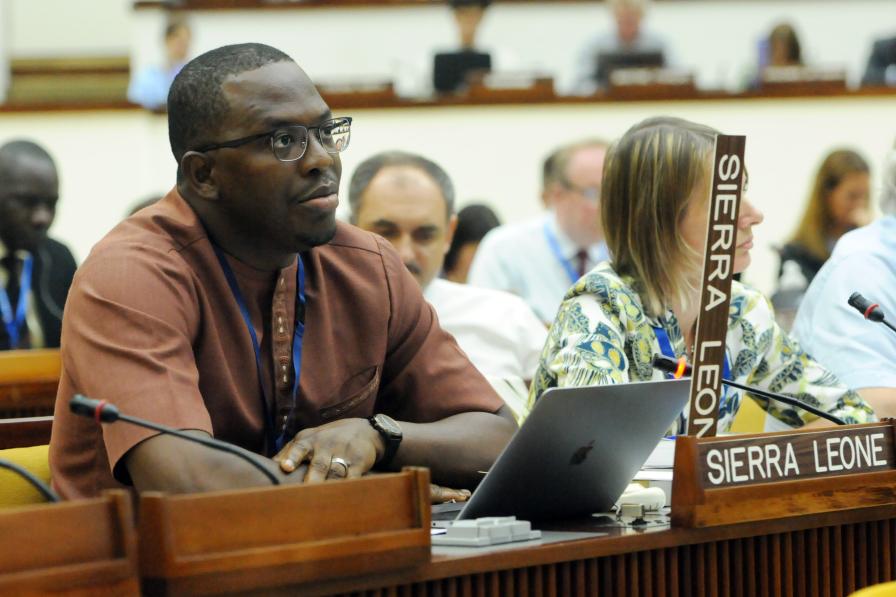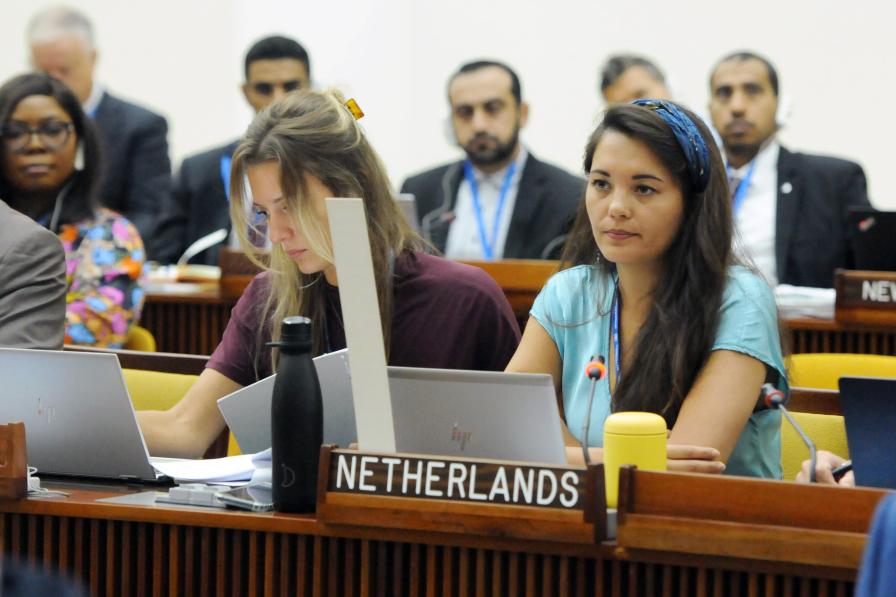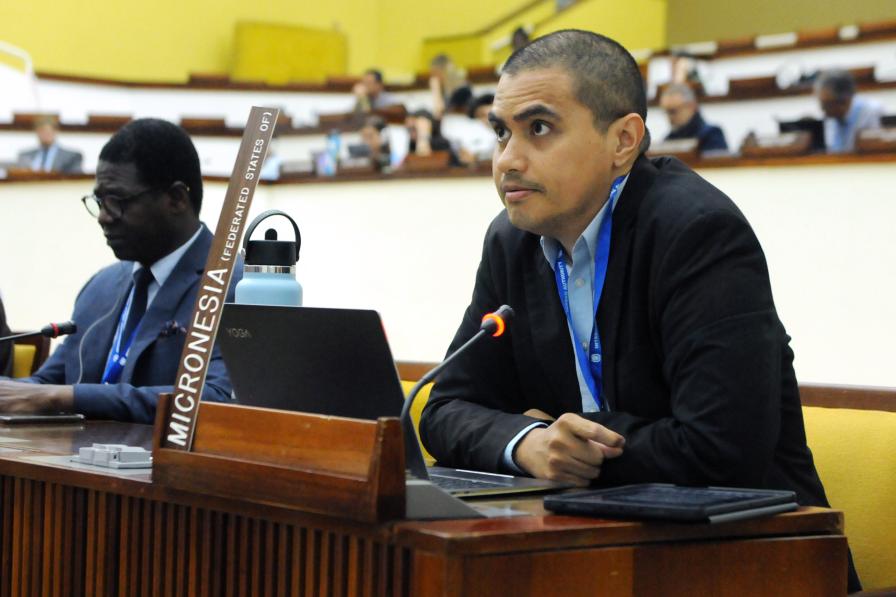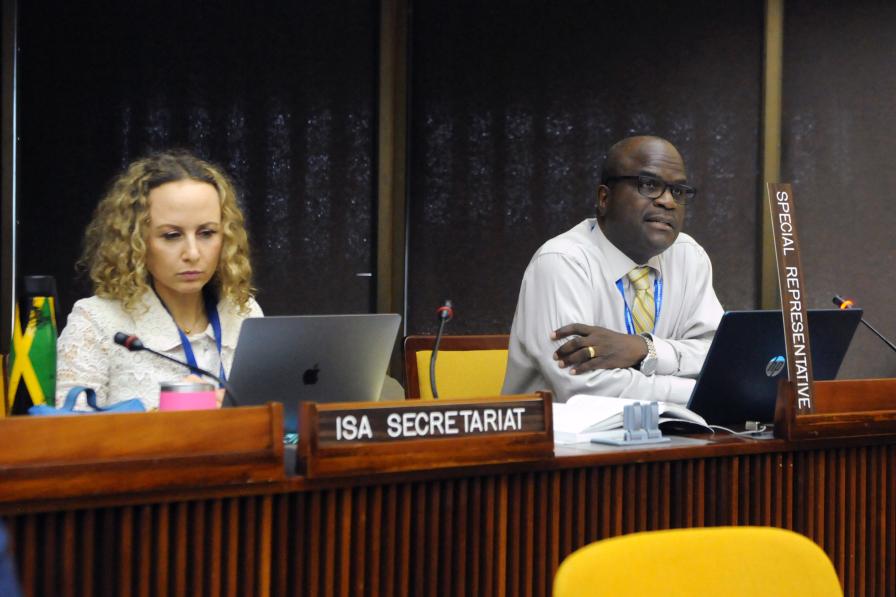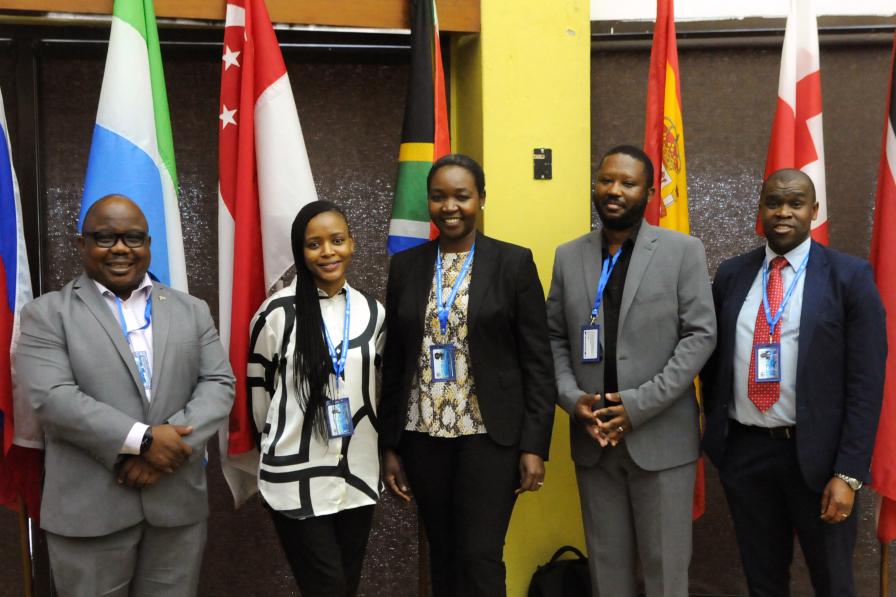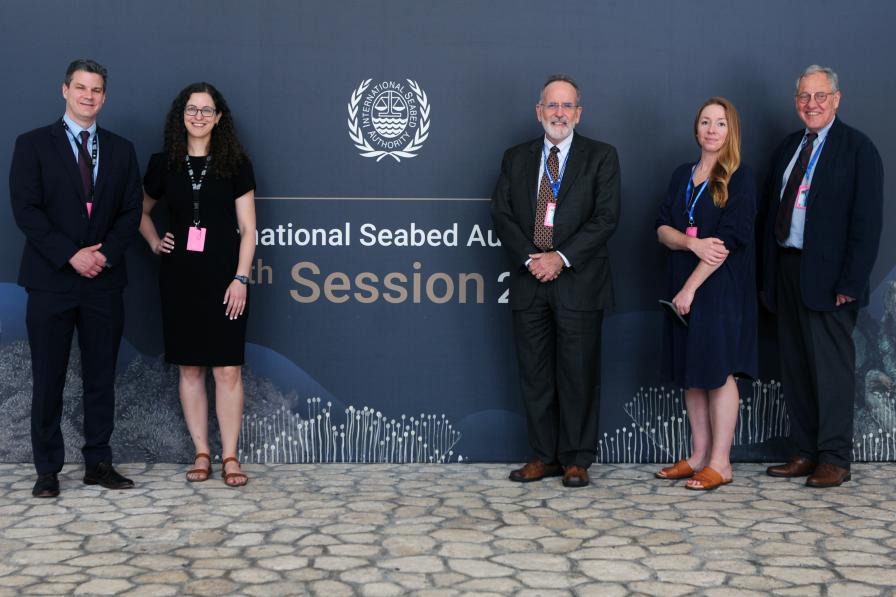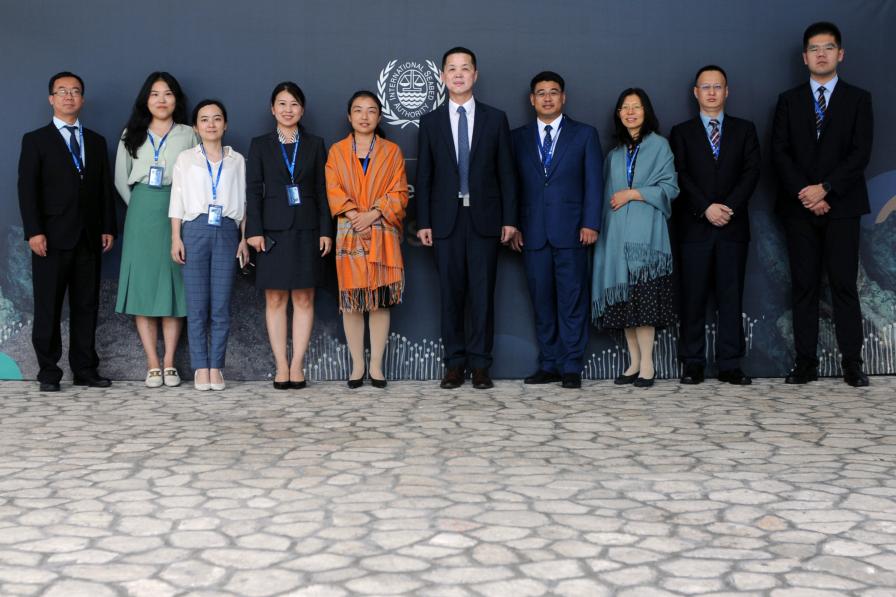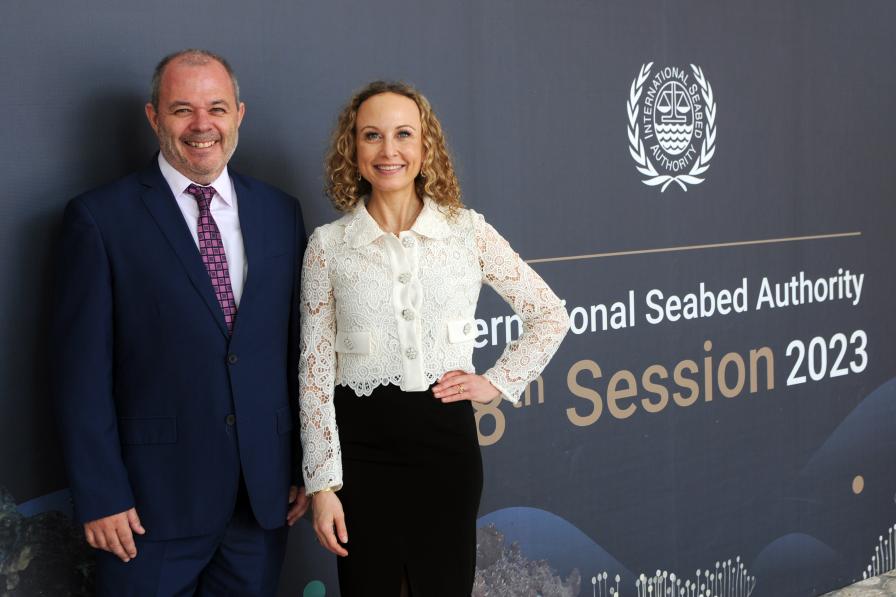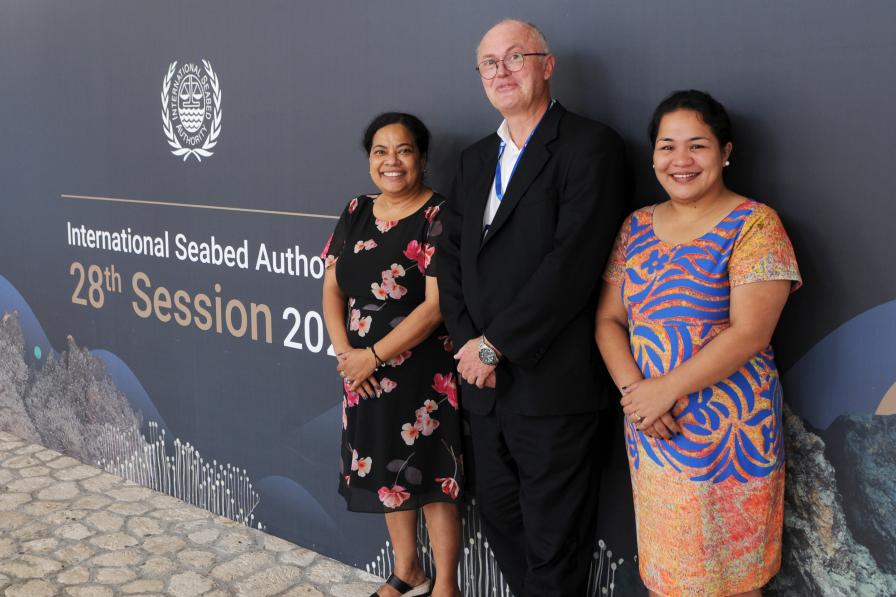“Do we know enough to reliably predict the environmental impacts of deep-sea mining?” This remark from an observer highlighted the underlying question facing delegates during the morning's discussions, which focused on environmental protection. A delegate was quick to draw the full picture of the day’s deliberations: “And once we figure it out, we need to ensure inspection, compliance, and enforcement (ICE) of all our environmental safeguards.”
Facilitator Raijeli Taga (Fiji) opened the last session of the Working Group on the protection and preservation of the marine environment, inviting Council members to focus on environmental impact assessments (EIAs) (regulation 47bis), delegates expressed different views on whether to include reference to “general international law.” Many delegations highlighted consultations between the sponsoring state and the contractor and coastal states with respect to resource deposits in the Area which lie across limits of national jurisdiction, should be open to all coastal states, not just "affected" ones. A delegate suggested including a provision on assessment of the impacts on human health.
On the EIA scoping report (regulation 47ter), a member suggested minimizing the consultation process, while another proposed specifying the extent and time frame for such consultation. A delegate suggested that the final version of the scoping report should be available on the ISA’s website to provide transparency. Another delegation noted that guidelines are recommendatory in nature. Some Council members requested deleting references to underwater cultural heritage, while others suggested further discussions.
On the environmental impact statement (regulation 48), many delegates supported moving part of the regulation’s content to a standard. Some delegations noted that, if these provisions are moved to a standard, their core elements should be captured in the draft regulations and function as signposts for developing the standards. A regional group stressed that: the independent experts’ peer review of the environmental impact statement should not be mandatory since the Legal and Technical Commission (LTC) is the appropriate body to perform an independent review. Some members proposed including a stakeholder consultation process and “detailed” descriptions of various elements, such as the environmental setting, and spatial and temporal boundaries. A delegate suggested describing potential cumulative environmental effects, and unavoidable residual impacts and effects.
On a new EIA and a revised environmental impact statement (regulation 48bis), some delegates suggested prescribing a role for the Council, in addition for the LTC, in requesting new EIAs. A couple of delegates proposed referring to an “additional” or “revised” EIA rather than a “new” one.
On test mining (regulation 48ter), Belgium presented the outcome of intersessional work, noting that test mining should be mandatory, comply with the highest environmental standards, and take place before an application for a plan of work. In the ensuing discussion, Council members, focused on, among other things:
- the need for a clear test mining definition:
- whether to require a standalone test mining report or include it in the EIA report;
- possible alternatives to in situ test mining; and
- whether test mining should be performed during the exploration or the exploitation phase,
An observer stressed that while test mining can provide substantial data, “its role is prognostic and its outcome open to interpretation.” Another observer stressed the need to take into account submarine cables. Others highlighted that test mining also has environmental impacts and should be subject to an EIA.
On mining closure plans (regulations 59-61), the Russian Federation, on behalf of Fiji, presented the outcome of intersessional work, highlighting areas of focus: post-closure monitoring and potential rehabilitation; procedural and financial issues; and definitions and terminology.
Facilitator Taga highlighted deliberations under the informal intersessional groups that allowed progress, encouraged further negotiations, and closed the meeting of the working group.
In the afternoon, the ISA Council convened briefly to listen to the report of the LTC on its work during the second part of the 28th session. LTC Chair Erasmo Lara highlighted, among other topics: implementation of the training programmes; review of the contractors’ annual reports; development of standards and guidelines; and development of the Indian Ocean Regional Environmental Management Plan.
The informal working group on ICE then began deliberations, facilitated by Maureen Tamuno (Nigeria). She highlighted intersessional work focused on identifying an optimal structural arrangement, and, together with Norway who facilitated the intersessional work, presented the outcome. The intersessional group suggested a hybrid model, including a chief inspector for day-to-day management; the establishment of a compliance committee within the LTC (LTCCC); and a specific decision-making role for the Council. It proposed focusing on: the relationship between the responsibilities of ISA organs; the utility of a chief inspector; the development of standards and procedures to ensure the LTC and LTCCC handle ICE issues with inclusiveness and transparency; and a review mechanism for ICE.
Many highlighted the importance of avoiding duplication of functions, and the need to accurately define the key functions to be carried out by the mechanism. Council members expressed divergent opinions on the suggestion to establish an LTCCC. Some supported the informal group’s proposal, while others preferred a self-standing compliance committee, established as a subsidiary body of the Council.
On the chief inspector proposal, many noted a potential operational role, with responsibility for the day-to-day management of inspections and for the inspectors’ roster, would be useful. Many also considered that a review mechanism would be beneficial, regardless of the specific ICE mechanism that will finally be agreed, in particular for future-proofing the ICE mechanism.
All ENB photos are free to use with attribution. For the 2nd Part of the 28th Annual Session of the ISA, please use: Photo by IISD/ENB | Diego Noguera
To receive free coverage of global environmental events delivered to your inbox, subscribe to the ENB Update newsletter.
Working Group on the Protection and Preservation of the Marine Environment
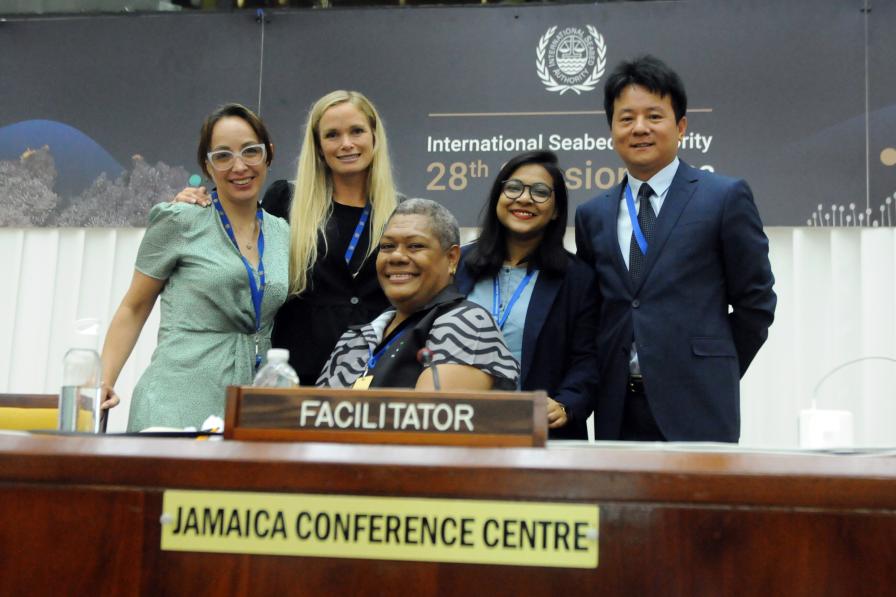
(L-R) Mariana Durney and Lea Kolmos Weis, ISA Secretariat; Raijeli Taga, Fiji, Facilitator of the Working Group on the protection and preservation of the marine environment; and Tamanna Khan and Yongsheng Cai, ISA Secretariat

Tomasz Abramowski, Interoceanmetal Joint Organization (IOM), and Pradeep Singh, International Union for Conservation of Nature (IUCN)

